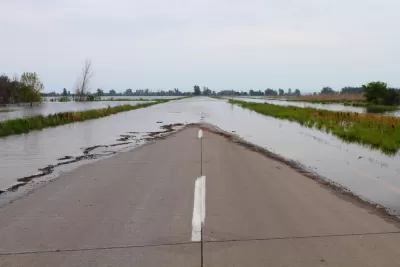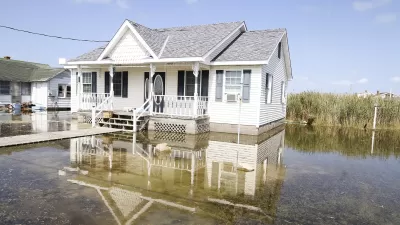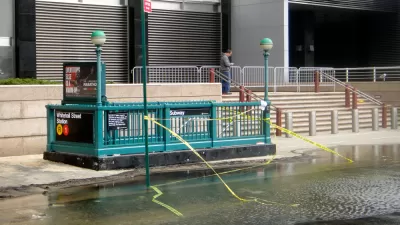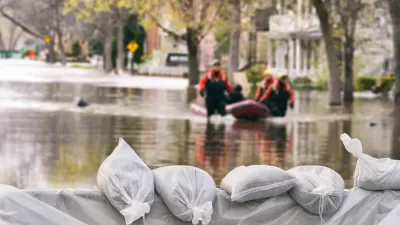While resources pour in for urban climate resilience projects, smaller communities often bear the brunt of extreme weather events.

According to Timothy Schuler, climate adaptation planning in the U.S. "has, with some notable exceptions, tended to focus on large metropolitan areas, particularly in the wake of Hurricane Katrina and Superstorm Sandy." But more recently, "Hurricane Ida served as a harsh reminder that the nation’s rural and smaller coastal communities often bear the brunt of the effects of climate change, suffering extensive flooding and other damage, yet lack the resources to rebuild or to implement measures that could prevent future disasters." These areas, Schuler writes, essentially become a "national climate sacrifice zone," overlooked and underresourced as climate change brings increasingly disastrous effects.
Yet "some 60 million people—1 in 5 Americans—live in rural areas," with the total rising to almost 90 million when including towns of 2,500 to 50,000 people. Weak political support, a low tax base, and "lack of access to the kinds of technical assistance design professionals provide to urban resilience projects" leave rural communities behind when it comes to resilience planning.
To mitigate the problem, organizations such as the Coastal Dynamics Design Lab (CDDL) provide cost-free "design and planning services to underserved areas, specifically around issues of disaster recovery and resilience." Projects like this "point to the value of university-affiliated design studios and research hubs, which at times offer smaller communities the only avenue through which they can access climate adaptation planning assistance." Additionally, "while smaller communities can stymie traditional design and planning models, they can serve as important testing grounds for how to work sensitively in other under-resourced places."
FULL STORY: In Ida’s wake, America’s rural communities need better protection—cities can’t hog climate adaptation

Study: Maui’s Plan to Convert Vacation Rentals to Long-Term Housing Could Cause Nearly $1 Billion Economic Loss
The plan would reduce visitor accommodation by 25,% resulting in 1,900 jobs lost.

North Texas Transit Leaders Tout Benefits of TOD for Growing Region
At a summit focused on transit-oriented development, policymakers discussed how North Texas’ expanded light rail system can serve as a tool for economic growth.

Why Should We Subsidize Public Transportation?
Many public transit agencies face financial stress due to rising costs, declining fare revenue, and declining subsidies. Transit advocates must provide a strong business case for increasing public transit funding.

How to Make US Trains Faster
Changes to boarding platforms and a switch to electric trains could improve U.S. passenger rail service without the added cost of high-speed rail.

Columbia’s Revitalized ‘Loop’ Is a Hub for Local Entrepreneurs
A focus on small businesses is helping a commercial corridor in Columbia, Missouri thrive.

Invasive Insect Threatens Minnesota’s Ash Forests
The Emerald Ash Borer is a rapidly spreading invasive pest threatening Minnesota’s ash trees, and homeowners are encouraged to plant diverse replacement species, avoid moving ash firewood, and monitor for signs of infestation.
Urban Design for Planners 1: Software Tools
This six-course series explores essential urban design concepts using open source software and equips planners with the tools they need to participate fully in the urban design process.
Planning for Universal Design
Learn the tools for implementing Universal Design in planning regulations.
Ascent Environmental
Borough of Carlisle
Institute for Housing and Urban Development Studies (IHS)
City of Grandview
Harvard GSD Executive Education
Toledo-Lucas County Plan Commissions
Salt Lake City
NYU Wagner Graduate School of Public Service





























